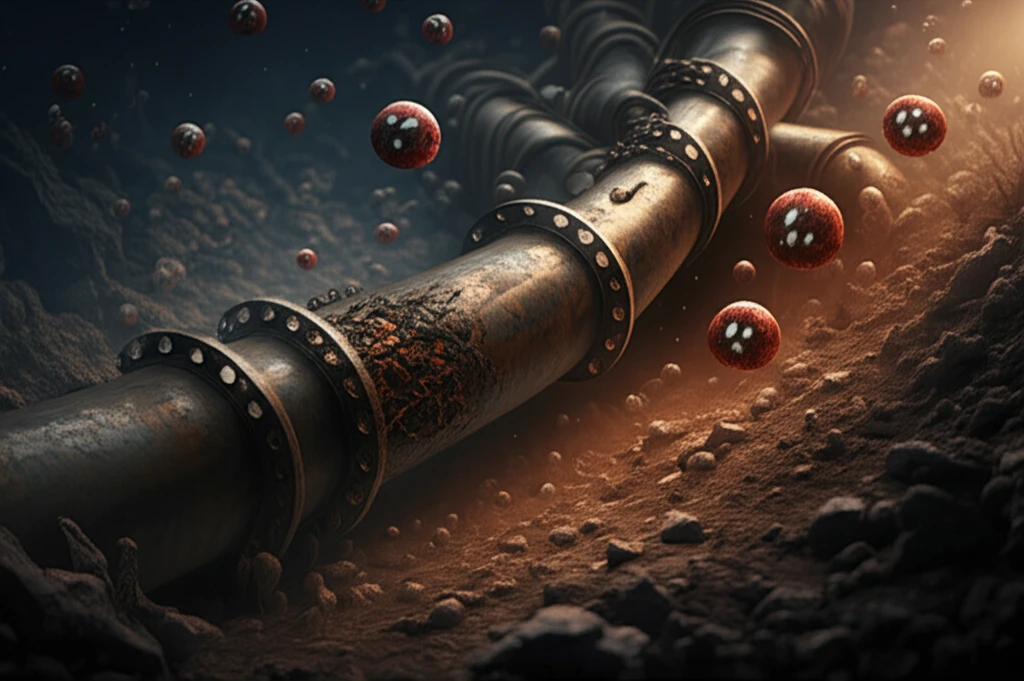
Unseen Threats: How Chloride Ions Corrode Buried Steel
"Uncover the hidden dangers of chloride ion penetration and its impact on the integrity of buried steel structures—essential insights for infrastructure protection."
Buried pipelines and steel structures are the unsung heroes of modern infrastructure, essential for transporting everything from water and gas to sewage and telecommunications cables. These vital components often lie hidden beneath our feet, silently performing their duties. However, this obscurity also makes them vulnerable to a variety of environmental threats, most notably corrosion.
Corrosion is a natural process where materials, typically metals, degrade due to chemical reactions with their environment. For buried steel structures, this process can be accelerated by various factors, including soil composition, moisture levels, and the presence of aggressive chemical species. Among these, chloride ions stand out as particularly insidious culprits.
This article delves into the specific threat posed by chloride ions to buried steel structures, drawing on research that examines how these ions penetrate soil and sediment to corrode steel. We’ll explore the environmental conditions that exacerbate this corrosion, the mechanisms through which chloride ions attack steel, and potential strategies for mitigating this risk.
The Science of Steel Corrosion: How Chloride Ions Attack

Corrosion of buried steel structures is a complex phenomenon influenced by a multitude of factors. These factors can be broadly categorized into environmental conditions, material properties, and the presence of corrosive agents. Environmental factors such as soil type, moisture content, temperature, and pH play critical roles in determining the rate and severity of corrosion. Material properties, including the composition and microstructure of the steel, also affect its susceptibility to corrosion. However, the presence of aggressive chemical species, such as chloride and sulfide ions, can significantly accelerate the corrosion process.
- Penetration: Chloride ions migrate through the soil or sediment, infiltrating pores and cracks to reach the steel surface.
- Breaching the Oxide Layer: Once in contact with the steel, chloride ions disrupt the passive oxide layer, creating weak spots susceptible to corrosion.
- Localized Corrosion: Chloride ions promote the formation of small, intensely corroded areas (pits) while leaving the surrounding surface largely unaffected. This pitting corrosion is particularly dangerous because it can lead to structural failure without readily visible signs of damage.
- Accelerated Corrosion: The presence of chloride ions accelerates the electrochemical reactions that drive corrosion, further weakening the steel structure.
Protecting Our Infrastructure: A Call to Action
The corrosion of buried steel structures by chloride ions presents a significant challenge to the longevity and safety of our infrastructure. Understanding the mechanisms through which chloride ions attack steel is crucial for developing effective mitigation strategies. Regular inspection and maintenance, coupled with the implementation of advanced corrosion protection techniques, are essential to safeguarding these vital assets. It’s not just about preserving steel; it’s about ensuring the safety and reliability of the services we depend on every day.
